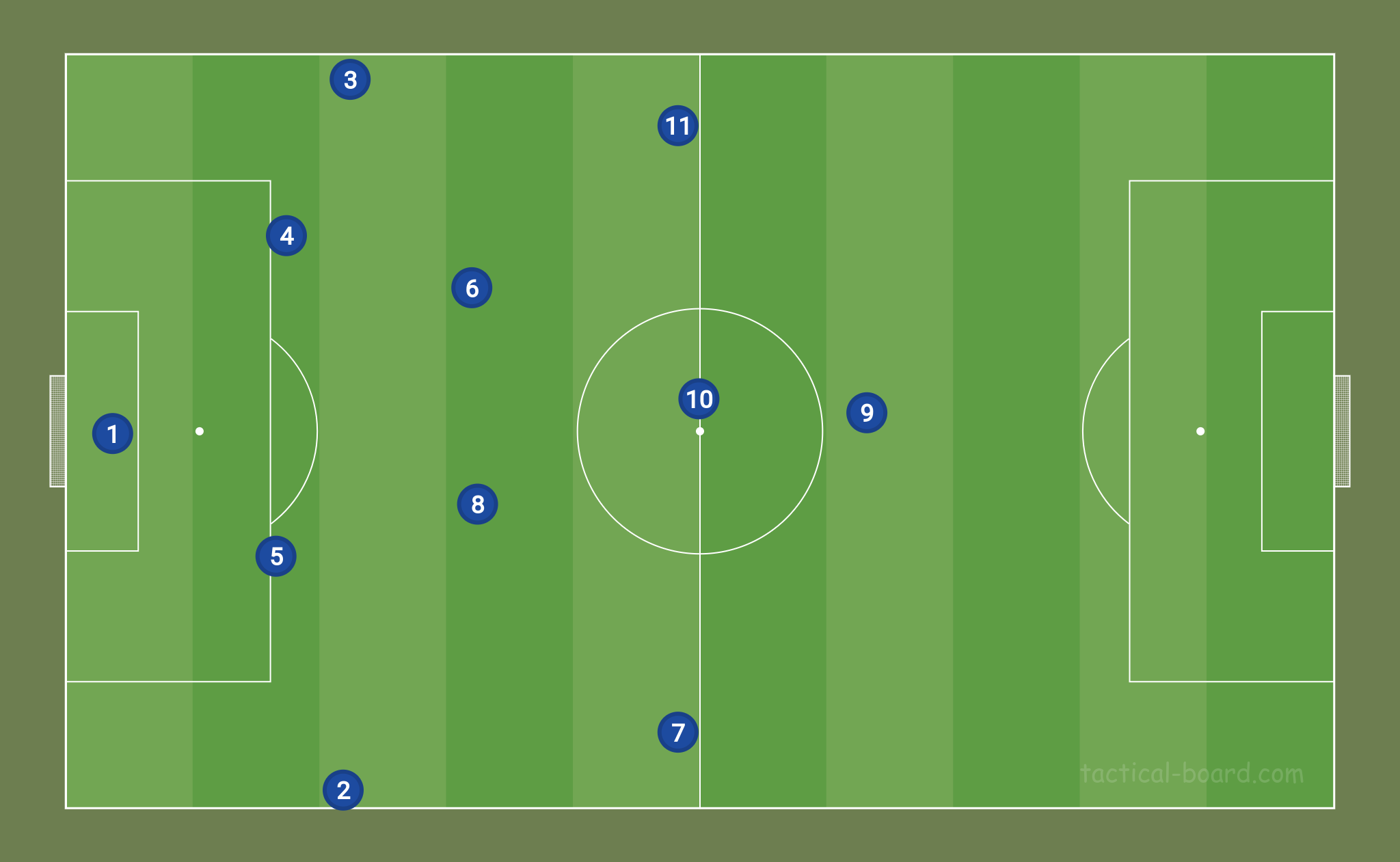General
As a coach, my currently favourite formation is 4-2-3-1. It is very simple, especially when taking into account that I am explaining it through the season to the kids. Compared to the simplest 4-4-2, it offers an additional midfielder by dropping one striker into half-space.
I like the formation because it offers plenty of attacking options while maintaining defensive stability. Two central (defensive) midfielders form solid base when building the attack. Full backs are providing the width while depth is maintained by striker and one or both wingers. Wingers can and should often come into the middle to create overload. One specific tactical setup I like is when one winger comes into the middle, plays a short layoff to any of the 3 midfielders while striker and the winger on the other side pin center back and full back. This diagonal 2vs.2 situation can be very dangerous when a good, dangerous ball in the depth is played.

Shallow dive into exploring tactical structure
Attacking midfielder in my system has a freedom in movement and his goal is to create overload on either side or in the center with his high quality movements and technical ability (real number 10). In the defense, attacking midfielder is very important because when in mid-low block, we play 4-4-2 where both front players need to close plenty of space. In the mid-low block, midfielders take care of opposition’s 2 front midfielders while the 3rd midfielder (since opposition usually play with 3 in the middle) is marked by the winger on the opposite side from where the balls is. If opposition’s center-back is left alone, our center back should take care of their most offensive midfielder (CAM) if in the dangerous (3rd zone). Center-backs then play in reality 2vs.2 against striker and attacking midfielder.
Most of the teams I play against (almost all) play in 4-3-3. This means that in the 1st zone I play with (-1), in the 2nd zone midfielders play 3vs.3 and in the last zone we have (+1). (+1) in the defense is used in a way that there always needs to be one center back able to handle balls in the depth. Full backs man-mark opposite wingers.
High-press
Playing with front three offers a nice option for aggresive high-press. Front players stay tight, with clear tendency to push the play to sides, where there are always less options. Wingers need to be able to do aggressive run to the side-line. Attacking midfielder man-marks opposition’s defensive midfield and 2 central midfielders man-mark opposition’s 2 midfielders.
Build-up
In the build-up, I try to bring down one defensive midfielder in order to create numerical advantage and exploit the space for center-backs so they could push the ball up the field.
Coming-up next
More about each specific moment in the football game can be found in next blog posts.